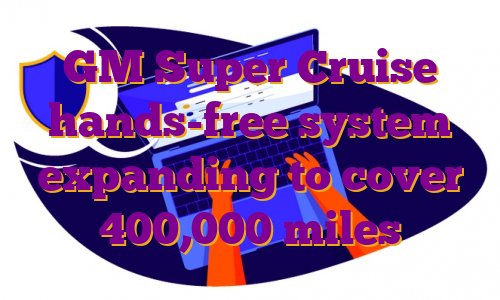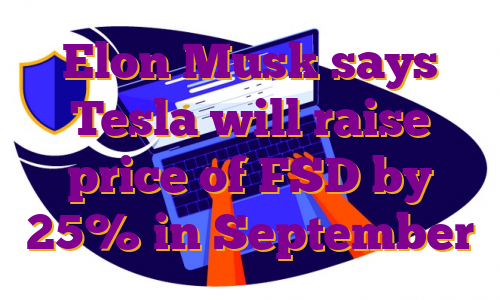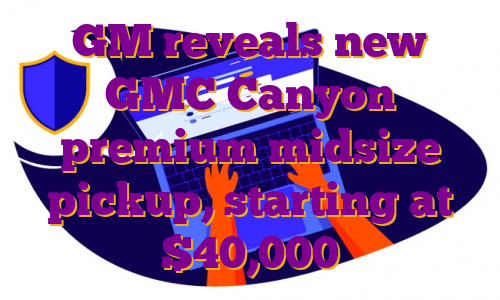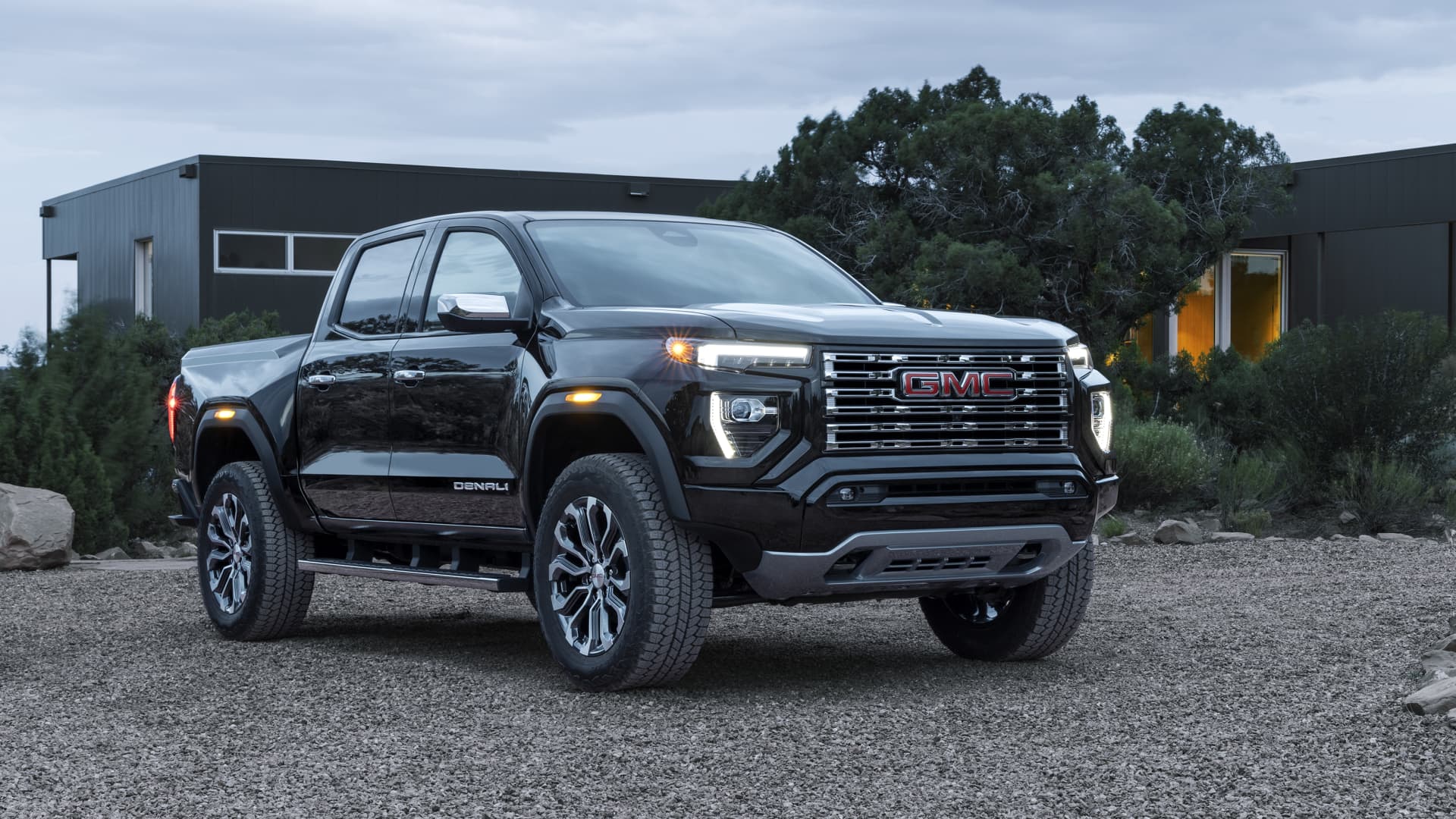That green light means you can take your hands off the wheel. Just keep your eyes on the road!Mack Hogan | CNBCDETROIT – General Motors is expanding its Super Cruise hands-free driving system in the U.S. and Canada later this year, introducing the feature for non-interstate roadways and highways such as Route 66 and the Pacific Coast Highway.With the additional roadways, the driver-assistance system will be usable across more than 400,000 miles of U.S. and Canadian roads, up from about 200,000 miles of strictly divided highway interstates.”These are the main roads that connect the smaller cities and the townships across the U.S. and Canada,” David Craig, GM’s mapping specialist, said during a media briefing. “This is expanding Super Cruise’s availability to many, many millions more customers.”Super Cruise uses a system of sensors and cameras to control steering, braking and acceleration functions of the car without the driver’s input. It also utilizes high-definition maps; a light bar to communicate with the driver; and an in-vehicle monitoring system to ensure drivers remain attentive while Super Cruise is operating.The feature, even with the update, won’t make turns on behalf of the driver or operate in cities, towns and residential streets, like some of Tesla’s driver-assist systems. Super Cruise will also hand control of the vehicle back to drivers if they are approaching an intersection with a stop sign or traffic light.Despite names like Super Cruise, or Tesla’s Autopilot and “Full Self-Driving” brands, these vehicles are not autonomous, or safe to use without a driver behind the wheel.GM said the newest roadways for Super Cruise will be available via over-the-air, or remote, updates, beginning in the fourth quarter of this year for most of its eligible vehicles. GM will not charge for the update, however the optional add-on currently starts at $2,200 or $2,500, depending on the vehicle.GM is expanding its Super Cruise hands-free driving system in the U.S. and Canada later this year to 400,000 miles of roadways,GMGM has slowly increased the availability and capabilities of Super Cruise since it was launched in 2017. It plans to offer Super Cruise on 23 models globally by the end of next year. It’s also announced a new system called “Ultra Cruise,” which GM has said will be capable of handling driving in 95% of scenarios.GM’s premium tier may make the company more directly competitive with Elon Musk-led electric vehicle maker Tesla. Driver-assistance systems from Tesla include the standard Autopilot, and premium option marketed as Full Self-Driving (or FSD), as well as, FSD Beta that lets drivers test out features on public roads before they go into widespread use.Driver-assistance systems have seen an increase in regulatory attention, specifically around accidents involving Tesla vehicles.Mario Maiorana, GM chief engineer of Super Cruise, said the company is in routine communication with the National Highway Traffic Safety Administration about the rollout of the additional roadways.”We’re not going to put it out until we’ve fully tested it,” Maiorana said, taking a slight jab at Tesla, which has been offering in-development “Beta” systems to some owners.GM’s Super Cruise hasn’t received as much attention or scrutiny as Tesla’s systems, partly due to additional safeguards and the company’s more conservative approach. GM has also only sold roughly 40,000 vehicles with Super Cruise, while Tesla offers some form of its systems on every vehicle it offers.As of the first week of July, NHTSA reported it had opened more than 30 probes since 2016 into collisions involving Tesla vehicles where driver-assistance systems like Autopilot were a suspected factor. The same report noted the federal vehicle watchdog was looking into two nonfatal incidents potentially involving Super Cruise.Tesla crashes under investigation as of the July report have resulted in 16 fatalities of vehicle occupants or pedestrians, according to the agency.Automakers are required by law to report fatal and other serious collisions involving driver-assistance systems to the NHTSA.– CNBC’s Lora Kolodny contributed to this report. .
Elon Musk says Tesla will raise price of FSD by 25% in September
Tesla CEO Elon Musk on Sunday announced a 25% price increase for the company’s premium driver assistance system, which is marketed under the name Full Self-Driving, or FSD. The price will increase to $15,000 from $12,000 on Sept. 5, Musk said in a tweet.Today, Tesla charges customers $12,000 upfront for FSD, or $199 per month on a subscription basis.Musk did not immediately mention an increase in the cost of FSD subscriptions and Tesla did not respond to a request for further information.All new Tesla vehicles come with a standard driver assistance package called Autopilot, which includes features like “Traffic-Aware Cruise Control” and “Autosteer.” These rely on cameras, other sensors, hardware and software to automatically keep a Tesla vehicle centered in its lane and traveling at the speed of surrounding traffic.Tesla’s highest-priced driver assistance option, FSD, includes what the company calls “Traffic and Stop Sign Control” and “Navigate on Autopilot” among its features.These more advanced features are intended to let Tesla cars automatically detect and slow down for traffic signs and signals; navigate from highway on-ramp to off-ramp while engaging turn signals; make lane changes and take exits.Tesla tells drivers to remain attentive and be prepared to take over their cars’ steering and braking at any time while using Autopilot or FSD. Its technology does not make Tesla vehicles autonomous.One Tesla feature called Smart Summon allows drivers to use a smartphone and Tesla mobile app like a remote control to call their car from across a parking lot and slowly drive, without anyone behind the wheel, to where they are standing.While some FSD features are also included in a lower-priced option called Enhanced Autopilot, or EAP, only Tesla customers who buy or subscribe to the premium option can request access to FSD Beta, an experimental version of Tesla’s system.FSD Beta users are supposed to obtain a high “Safety Score” from Tesla to get and maintain access to the system.Tesla’s approach has drawn criticism and regulatory scrutiny from the National Highway Traffic Safety Administration and the California Department of Motor Vehicles alike.Still, the company is forging ahead and doing a limited release of the latest version of FSD Beta, to a relatively small pool of users, Musk also tweeted on Sunday.Earlier, he wrote on Twitter, “There are many major code changes, so this will be an extra cautious rollout. Releasing on 8/20 to ~1000 Tesla owners, then 10.69.1 next week to accommodate feedback & release to ~10k customers, then 10.69.2 week after & release to rest of FSD Beta.”Owners who gain access to FSD Beta are able to send feedback to the company via their cars when the system fails or acts glitchy. Tesla previously said 100,000 drivers had already installed FSD Beta.Tesla is planning to make FSD Beta even more mainstream.At the Tesla 2022 Annual Shareholder Meeting on August 4, Musk said that FSD Beta will be available to anyone who requests it by the end of this year. Here’s a quote from Thomson Financial’s transcript of the meeting: “We’re still tracking very much to have widespread deployment of FSD Beta this year in North America. So I should say basically, FSD will be available to anyone who requests it by the end of this year.”Among those who are receiving the limited-release update this weekend are widely followed social media influencers who sell Tesla merchandise and run ad-supported videos on YouTube channels where they review Tesla’s latest releases and more.Since 2016, the NHTSA has opened 38 probes into collisions that involved a Tesla vehicle where driver assistance systems including Autopilot and more advanced systems were thought to be a factor. Nineteen fatalities were reported as part of those Tesla-involved collisions under investigation.Separately, California’s DMV recently accused Tesla of deceptive marketing practices with regard to the features in its vehicles, and it is conducting a technical review of Tesla’s systems including FSD Beta.Ashok Elluswamy, Tesla’s director of Autopilot software, said on Twitter this weekend that “Autopilot prevents ~40 crashes /day where human drivers mistakenly press the accelerator at 100% instead of the brakes.” Tesla generally does not make data about its systems available to third-party researchers for confirmation of its claims. .
GM reveals new GMC Canyon premium midsize pickup, starting at $40,000
DETROIT — General Motors on Thursday revealed its redesigned GMC Canyon as a more premium offering than the current midsize pickup, including a new off-road AT4X model that will expand the vehicle’s pricing range.The new AT4X model features off-road performance parts as well as unique interior and exterior styling. It will launch alongside a standard AT4 off-road pickup, premium Denali model and an entry-level Elevation trim that will start at about $40,000. The company will also offer a limited “AT4X Edition 1” vehicle for the first year of production, starting at $63,350. Starting pricing for the current model tops out around $50,000.Amid pent-up demand and record high prices, automakers have been adding more off-road and performance variants to their lineups to beef up profit margins before they transition more to electric vehicles, which can offer high performance but have lower margins than gas-powered vehicles.GM started offering AT4 vehicles with its full-size Sierra pickup in late 2018. It has since expanded to the entire GMC lineup. AT4 currently accounts for about a third of Canyon sales, according to officials.The Canyon is a sibling vehicle to the recently unveiled Chevrolet Colorado midsize pickup, but the company has greatly differentiated the designs of the new vehicles. However, both pickups share the same platform and “bones” and are exclusively powered by a 2.7-liter four-cylinder engine that produces up to 310 horsepower and 430 foot-pounds of torque.GM expects to begin producing the 2023 Canyon early next year, with AT4X models beginning in spring 2023. GM opened reservations for the 2023 GMC Canyon AT4X Edition 1 on Thursday.Each 2023 Canyon is higher and wider than the current generation. It’s also longer but offers about the same interior space as the current vehicle. The new design is more aggressive than the outgoing model, including a large rectangular grille and a new iteration of the brand’s signature C-shaped front lights.Midsize pickup trucks are important to the automaker, but their sales are far lower than GM’s larger full-size pickup trucks. For example, GMC sold only about 13,700 Canyons through the first half of this year compared with more than 70,000 Sierra light-duty pickups during that time.GM’s U.S. sales were down about 18% through the second quarter as the global automotive industry continues to manage through supply chain problems, including a shortage of semiconductor chips. .
Premium Driver App Launched As Low-Cost ADAS Backup, Supplement
Image generated by the mobile app Driver which monitors both road conditions and driver … [+]
Driver Technologies Inc.
You’re driving along when a pedestrian suddenly dashes out into the street triggering warning beeps to alert you take action. That alert isn’t coming from a sophisticated advanced driver assistance system (ADA
ADA
S) or from the console of an autonomous vehicle, but courtesy a free smartphone app called Driver created by startup Driver Technologies Inc.
On Tuesday, the company announced the formal launch of a paid, premium version that offers a wide menu of additional features.
Using a combination of a smartphone’s camera and artificial intelligence, Driver ratchets up the device from a simple dash cam to what Driver Technologies co-founder and CEO Rashid Galadanci calls MADAS, mobile advanced driver assistance system.
Rashid Galadanci, Driver Technologies Inc. co-founder and CEO
2014 +2 Ian Coe
“As you drive we monitor the road outside the vehicle for cars, pedestrians, motorcycles, buses, trucks, animals, things like that, understanding the lanes, understanding the distance between you and those objects and then we monitor the driver for drowsiness and distraction, attentiveness, playing with the phone, what direction they’re looking and then real time on the edge we alert you audibly and visually if we think you’re at risk or we think you’re falling asleep,” Galadanci explained in an interview with Forbes.com.
All that is available on the free version of Driver. After a soft launch, the company announced Tuesday, the availability of a premium version that carries a monthly charge of $4.99 for consumers and higher rates for fleets and commercial organizations.
DriverCloud is a new feature of the premium version of the Driver mobile app that gives users access … [+]
Driver Technologies Inc.
That cost adds access to national roadside assistance through a partnership with the mobile app Honk, gas discounts through GasBuddy and DriverCloud where users can store video of their trips for later review or sharing on social media or with police or insurance companies to document incidents.
In addition to individual motorists the premium version of Drive is also aimed at fleets which might otherwise invest large sums for management systems to monitor driver behavior and activities along with providing links to secure road assistance.
“The commercial industry isn’t aligned with the products out there. 99% of the market are mom and pop fleets or one or two vehicles,” said Galadanci. “the last thing they need is to install is $700 a month hardware.”
It’s basically using existing smartphone capabilities that “unfortunately are used mostly for things like Pokemon Go!,” Galadanci cracked.
If many vehicles already are equipped with ADAS, why bother installing and using Driver, let alone pay for a premium version? Galadanci estimates only 8% of U.S. drivers actually have access to ADAS, park-assist or lane awareness technology in their cars or trucks and widely available and affordable self-driving vehicles for the general population are a pipe dream.
“I realized in horror some time in 2016 that despite the marketing pitch that was coming out of the (Silicon) valley, we weren’t going to have autonomous cars by the end of that year or the next year or the year after and they certainly weren’t going to work everywhere in the U.S. let alone everywhere in the world and what that would mean was we would have this continuation of the 1% of the 1% get access to this technology and no one else does,” Galadanci said as he related his thoughts in founding the company.
He stresses, however, even in ADAS-equipped vehicles Driver can be a supplement and not a substitute.
Galadanci grew up in both New Hampshire and Nigeria, his father’s homeland. While always interested in car safety, his interest became more acute after his father survived a collision while driving a Volvo in Nigeria. The other driver did not. His father exclaimed afterwards, “the Volvo saved my life” Galadanci recalled.
Thinking about the safety technology for which Volvo made a reputation along with the brand’s premium price, Galadanci rued the fact for many consumers that price was just too high.
“This kind of technology can always be difference and out of reach for a lot of people,” he explained.
Combining that reality with his lifelong interest in computer technology Galadanci decided there needed to be a more accessible way for almost any motorist at any economic level to be protected.
Thousands of drivers have found it hard to resist protection that costs nothing, or close to it.
Since the company was launched in 2018 the Driver app has been downloaded more than 200,000 times in more than 170 countries and now has “tens of thousands of active users all over the globe,” Galadanci said. For competitive reasons he declined to give exact user data.
Investors are betting Driver is in the fast lane. During a series A round of funding last year Driver Technologies raised just over $10 million from such firms as IA Capital, Liberty Mutual Strategic Ventures, State Auto Labs/Rev 1, The Social Entrepreneurs’ Fund, C2Ventures and Kapor Capital.
In the end, Galadanci believes Driver simply democratizes road safety and puts it in the hands of even the most cash-strapped motorists because while not everyone can afford a costly technology-stuffed vehicle, “everybody has a smartphone.”
.







